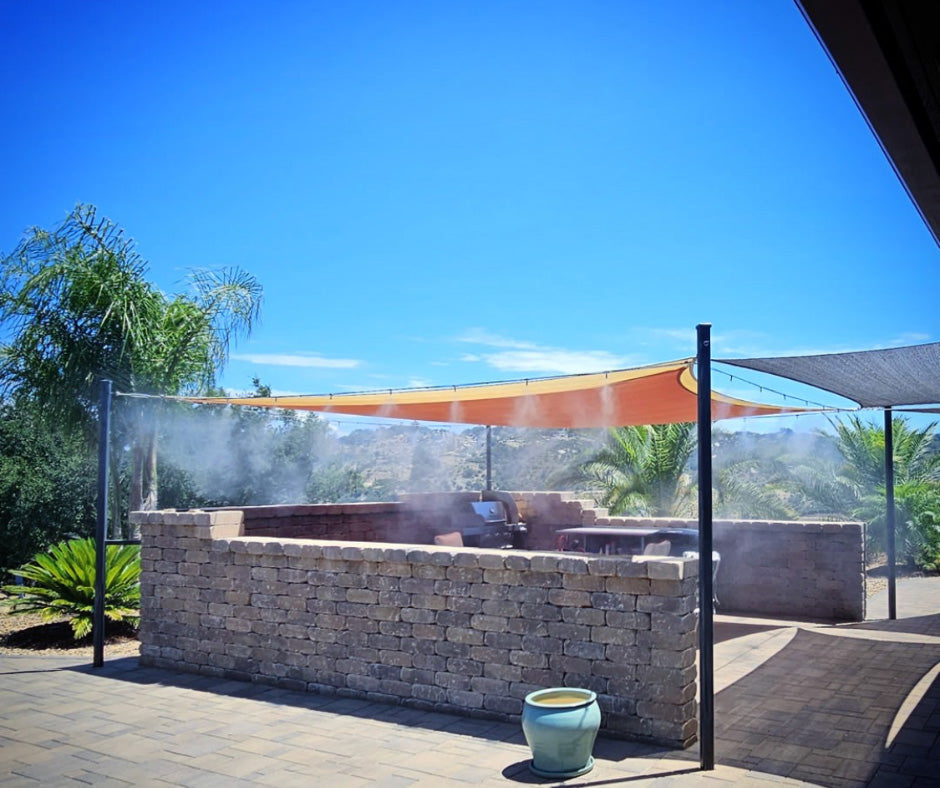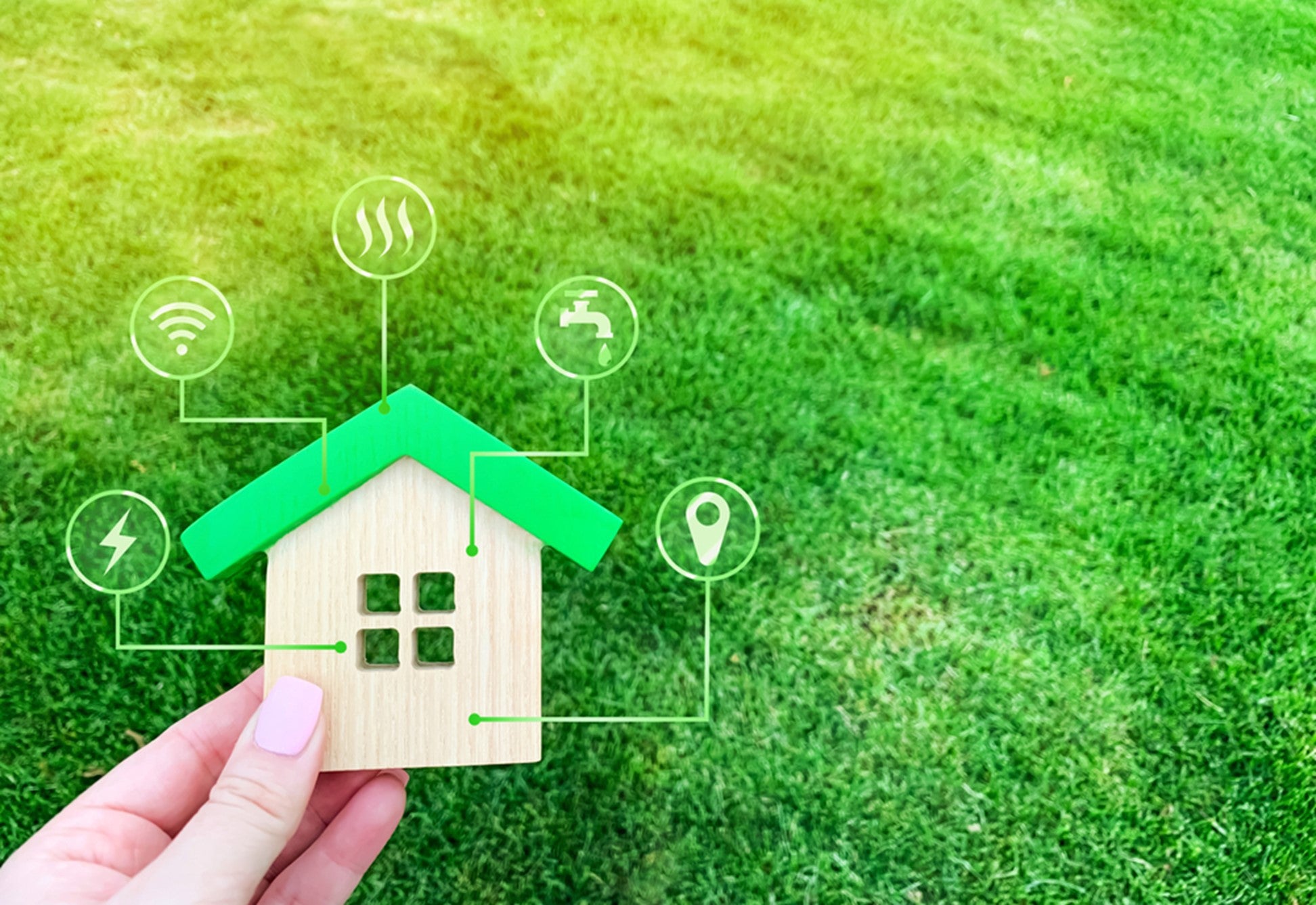If you’re trying to go green, you’re probably figuring out that a lot of your normal day-to-day practices need to change. Well, what about the temperature control in your home?
HVAC systems, and air conditioning in general, tend to be some of the most resource-intensive appliances in any home.
Today, we want to compare misting systems vs air conditioning to find the greener solution.
You might be able to cool parts of your property without worrying about air conditioning.
High Pressure Misting System 101
If you’re not familiar with them yet, high pressure misting systems won’t make much sense to you. Essentially, they’re air conditioners for outdoor spaces. Except, they work by evaporating water instantly via a long system of tubing and small diameter nozzles that are fed high PSI water in small amounts.
Since a small amount of water is shot through the air over a great surface area, the temperature of the air during warmer seasons immediately evaporates it. That cools down the air in the affected area without anything more than a small amount of water.
The Main Resource Consideration Between Misting Systems and ACs
The main difference we need to look at between misting systems and ACs is the amount of electricity used. ACs, especially central air units, are known for skyrocketing electricity bills because they’re such energy hogs.
On average, an air conditioning unit costs $657 or more per year to operate. In warmer states, larger homes, or with less efficient AC units this number may grow much larger.
That’s still quite a bit just to cool your home.
In comparison, misting system pumps only use 200 watts of electricity on average. The electricity usage is practically negligible, and the rest of the system is purely mechanical. There are no other electricity requirements.
However, water is a concern. Since the cooling effect relies on water, it’s in constant use when you have the unit on.
Luckily,
very little water is used at a time, and the cooling effect is nearly instant. So, if you use the misting system while you’re outside, and not when you do not need outdoor cooling, you can reduce your water cooling costs.

Materials Comparison
It’s not just the amount of electricity or water that is used that contributes to either appliance’s environmental impact. The materials used to manufacture each item matter, too.
In this category, an outside misting system is the clear winner. The pump itself is a mechanical item that needs oil and a couple of parts that have minor negative impacts such as rubber, but in general, it’s a small item that doesn’t require a lot, and it uses very little electricity on top of that. The rest of the system is made of steel and plastic, depending on the exact model of the misting system you buy.
An AC is a little more problematic.
First, you have the sheet metal casing. That’s not horrible, and neither is the small amount of plastic used for knobs and fasteners.
However, the extensive electronics used to control the AC, the foam used to insulate various parts, and the refrigerant that cools air passing through it are all horrible for the environment. Especially the refrigerant chemicals. When an AC is thrown into a landfill, it eventually leaks everywhere.
This is even an issue with window units that are smaller and typically fairly eco-friendly in the modern age.
Finally, there’s the waste.
When you get rid of a misting system, it’s mostly metal tubing that can easily be recycled as-is. You can even find uses for it at home.
However, an AC is far more complicated to recycle, and it’s more likely that companies will throw it all in landfills to save time and energy.
The Difference in Cooling Between AC and Misting Systems
There is one main difference between the two. You really don’t want a misting system inside of your home. They’re more suited for outdoor spaces. There are a couple of things to think about with that detail.
Of course, it means that your home won’t be cooled by the unit. However, you’ll have an area that is significantly cooler to retreat to, and with it being outdoors, you’ll experience the outdoor part of your property a lot more than the average person. Also, considering it’s hottest during the day most often, you can easily enjoy the outside more while still having a comfortable home at night.
With an AC, you obviously get to control the interior temperature of your home, but between the costs and the fact that it makes you seal your home up, there are detrimental factors, as well. You tend to stay indoors more, you don’t get fresh air as much, and there are a lot of negative effects associated with both those things.
The cooling effect of a misting system also helps the surroundings.
On a particularly hot and dry day, the added moisture can help your plants, stave off insects that attack the plants you have around your home, and generally lower the outdoor temperature on particularly hot days when the ecosystem around your home is a little too hot, too.
Is a Misting System Worth it?
There are drawbacks to using a misting system. Your home’s interior won’t be cooled by it, and obviously, you want a comfortable place to be when you’re inside your home. However, you can always supplement the misting system with eco-friendly window units inside key rooms of your home.
When comparing misting systems vs air conditioning in terms of environmental impact, misting systems are a clear winner as a greener solution. The dramatically lower electricity usage and material waste caused by misting systems means you are making a positive impact on the environment by making the switch.
However, you do need to buy a high-quality misting system to experience all of its benefits.
For that, aerMist is your go-to source.
At aerMist, we’ll help you determine your exact needs, find the perfect product setup, and get you started on the path to eco-friendly cooling.
Contact us today.





